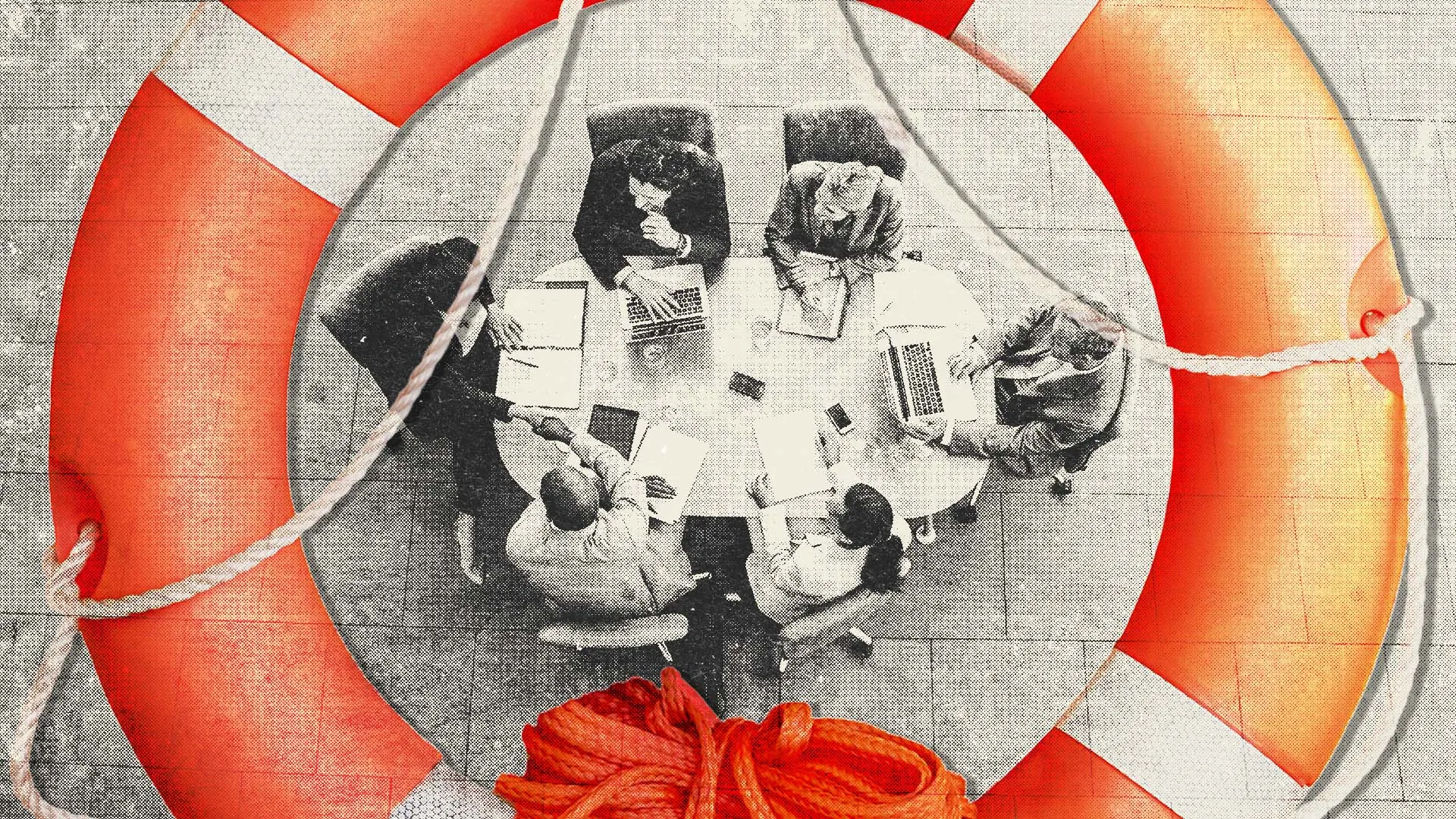Copyright Inc. Magazine

Running a business seems very different from captaining a backcountry search-and-rescue (SAR) team. The first involves lots of emails and Zoom meetings, while the other requires rope-haul systems and Stokes litters, not to mention plenty of hiking. But the corporate and wilderness worlds have more of a human overlap than a first glance would suggest. That’s why a new study out of Antioch University about what makes SAR teams tick has unearthed valuable lessons that business leaders can use to keep their own teams happy, healthy, and productive. SAR teams operate in high-stakes environments, often in life-or-death, no-fail circumstances that require quick and decisive action. Some companies, despite the fail-early-fail-often startup ethos, do too: Fail and you might lose your funding, lose a lawsuit, or even—like a SAR team—lose someone to a workplace accident. But even when lives aren’t at stake, livelihoods always are. To learn more about how rescuers’ psychology and interpersonal dynamics work, scholar Sarah Seiler, a newly-minted PhD and the author of the Antioch University study, analyzed data from hundreds of SAR volunteers. It turns out, what works in the backcountry translates to the business world. Featured Video An Inc.com Featured Presentation Searching for ‘psychological safety’ Seiler has worked as a firefighter, paramedic, nurse, and emergency preparedness coordinator. When she went back to school to study leadership, she was the clinical officer for an organ procurement organization. Soon after the pandemic hit, she moved full-time to the mountains of western North Carolina, and that’s where she got involved with SAR. People were desperate to get outside their homes. “Everybody and their brother was driving up from Greenville and Charlotte, and they had never seen a tree,” she says, joking about visitors from the larger cities in the Carolinas. Several times a month, wilderness newbies needed a rescue. Seiler joined the Saluda Fire Department, which is responsible for SAR operations, as a volunteer. She decided to pursue a PhD in leadership and change, in June 2020. And when it came time to write her dissertation a few years later, it made sense to study SAR team members across the country. Specifically, she wanted to know what made them feel like they belonged—that means feeling accepted and included by the group, for their true selves—and had “psychological safety.” That’s perhaps an unfamiliar term, but it has a simple definition: “It is feeling brave enough to be able to speak up, to challenge the status quo, to share an idea, to ask for help, to speak out when something isn’t safe,” Seiler says—something people need to be able to do without fear of negative repercussions. If people felt both of those things, she thought, they were more apt to stick around, “due to feeling heard and valued while having a stronger sense of purpose and agency in their roles.” The balance would also help the team operate better, more safely, and with innovation. “If you do not have everyone fully committed and fully open to feedback, then you are more likely to have errors,” says Seiler. “You’re more likely to have turnover.” No one wants errors, in the wilderness or in a corporate setting, and both SAR teams and companies want to retain the employees they’ve sunk costs into—whether they have trained them to splint a leg with a ski pole or to navigate proprietary databases. After all, onboarding can cost more than a position’s yearly salary. Plus, in creative, high-risk and high-intensity environments—on a mountain peak or in the conference room—welcoming, safe teams benefit from diversity of thought and experience. Without them, Seiler says, “you’re also more likely to have bad ideas.” Those are reasons why belonging and psychological safety are important. But how to foster them is another story. To find out, Seiler surveyed nearly 500 SAR volunteers, and analyzed their qualitative and quantitative answers to see what boosted or slashed good vibes. The results make intuitive sense. Here’s how to create a positive environment on your team, even if you’re not leading a wilderness rescue: Foster an inclusive environment People felt they belonged if they were needed and could meaningfully participate. “We listen to everybody, we respect everybody, we are inclusive,” says Seiler. Creating shared experiences and opportunities for connection also led to feelings of belonging, while cliques, favoritism, and ego-driven interactions led to more dissociation. Something new Seiler found, though, is that belonging isn’t just a warm, fuzzy feeling: it’s a bridge to psychological safety. The boss can’t just tell people to speak up. Belonging has to come first. Without it, even the most open-door policies are effectively shut. Aim for small gestures Fostering those feelings, in a SAR team or a sales team, isn’t complicated—you don’t need trust falls and weeklong retreats. “Start small and act often,” says Seiler. For instance, once when she hurt herself, her fellow rescuers called to check on her; they also invited her to informal training sessions. At the office, that might mean checking in to see how that big quarterly project is going, or grabbing coffee with the new guy. Learn someone’s story Seiler’s results also found that people needed to feel valued in a robust way. “What is your life? What is your educational background? What kind of world have you lived in, and what can you bring?” she says. Getting too personal isn’t always ideal, but maybe a direct report who studied physics before getting into finance has tips and tricks—or cosmic wisdom—that those with traditional backgrounds don’t. Conduct after-action reviews and value learning Belonging and psychological safety, one after the other, bloomed best from an environment centered on continuous learning and inclusion. There’s a foolproof way to demonstrate that your team lives in that fertile environment, whether you’re in the forest or not: after-action reviews, where everyone is invited to provide feedback, without fear of retribution. “That doesn’t just apply to search and rescue, it goes across all teams,” says Scott Hammond, a professor of management at Utah State University’s Jon M. Huntsman School of Business, a member of the Utah County Sheriff’s SAR team, and an outside reviewer on Seiler’s dissertation. Those reviews give people a consequence-free and hierarchy-breaking forum to improve and feel heard—so the team can nail the next helicopter hoist or client meeting. Having teams that function well in these particular ways is, Seiler found, even more important in an era of fast-evolving technology—whether that means skin-sensing drones, or a marketing strategy on a new social platform. “Creating environments where your teams can adapt quickly is more and more and more critical,” Seiler says. Seiler’s findings actually dovetail with those of Hammond, who recently published the book Highly Reliable Teams, meant for any organization with a no-fail mission but based partly on studies of SAR organizations. He found reliable teams had nine characteristics, ranging from an obsession with learning to a welcoming of expertise to a free flow of information. The result is resiliency One of the last of Hammond’s list of characteristics, though, is where Seiler’s work slots in. Hammond found that highly reliable teams had to be resilient. “We take care of each other in such a way that we look out for each other, so that we’ll be willing to go back and do it again and maybe even be more healthy,” he says. Seiler’s work, he says, showed that having belonging and psychological safety made people resilient. It revealed the how. So the next time the strategy team seems lost in the woods, business leaders would do well to take those small, frequent steps—in SAR’s muddy footprints.



